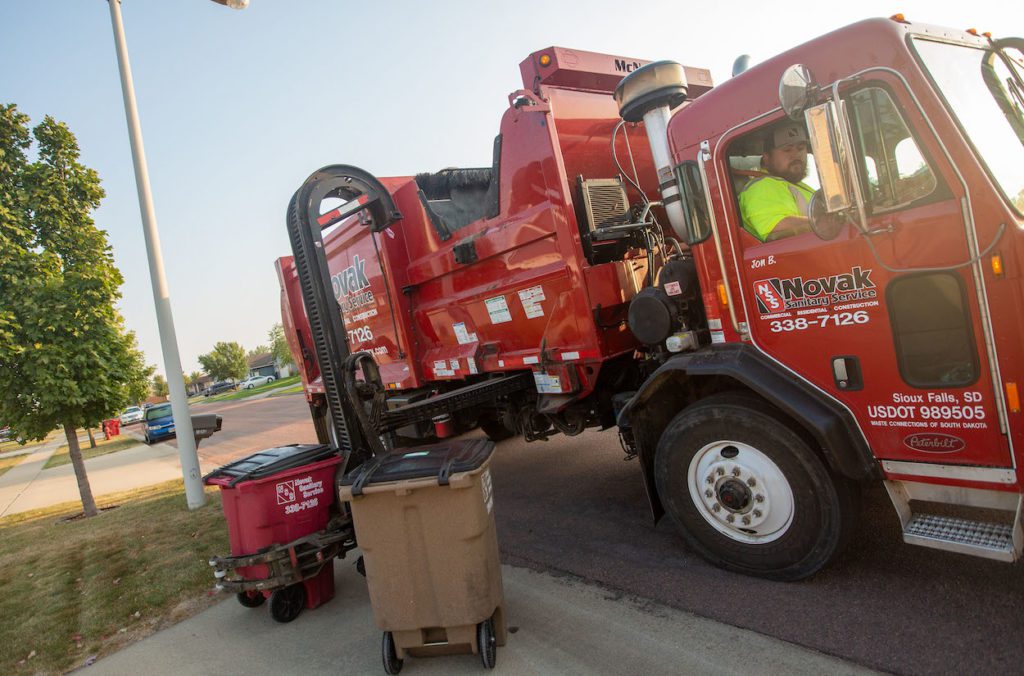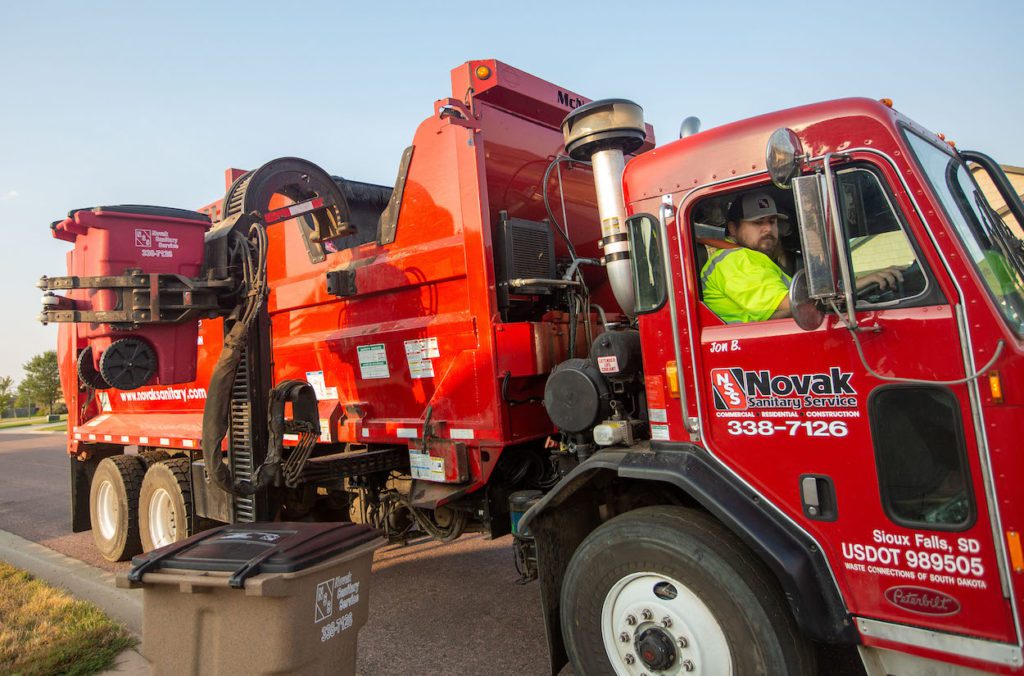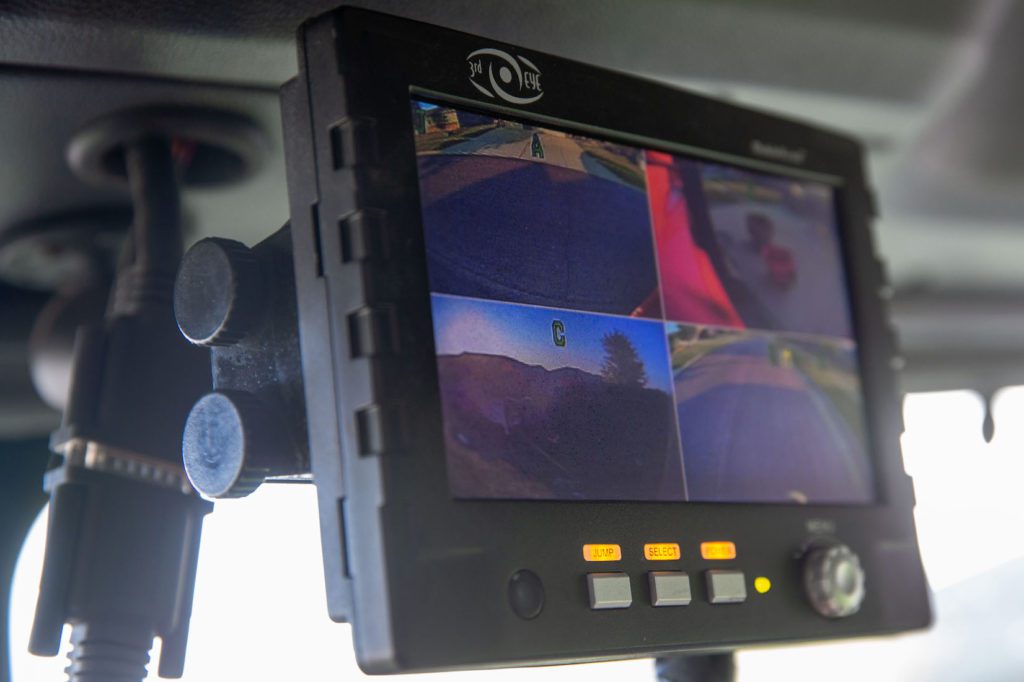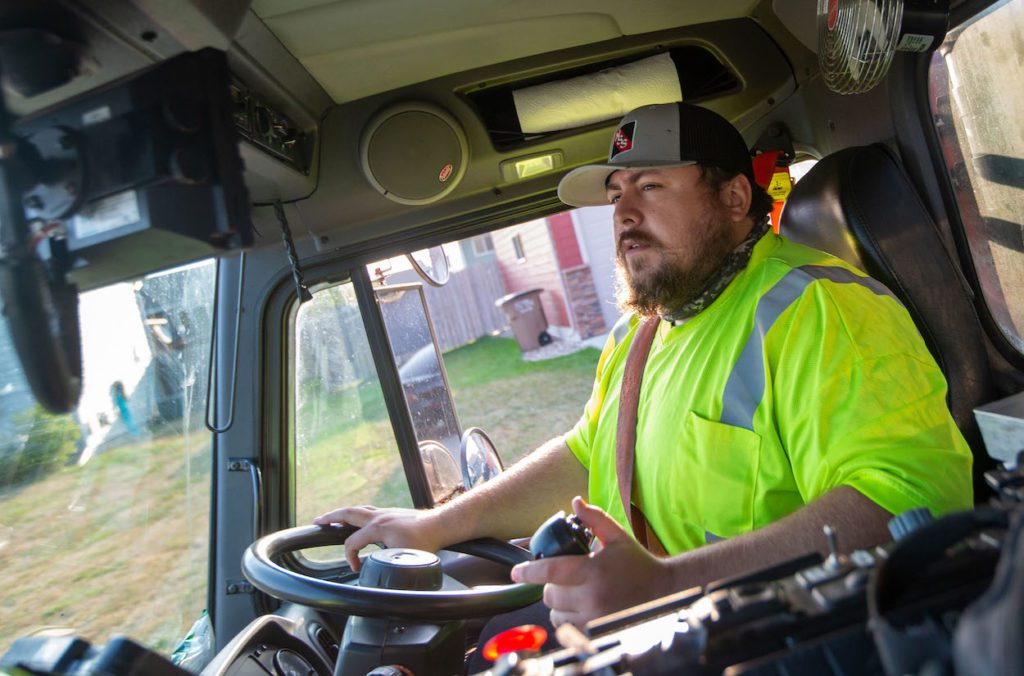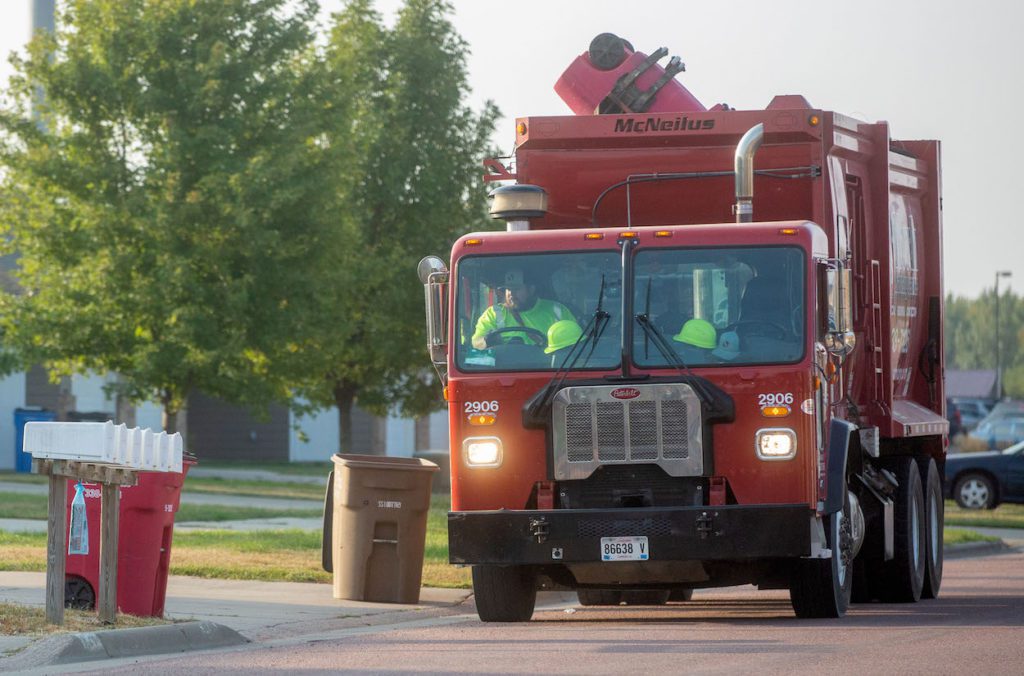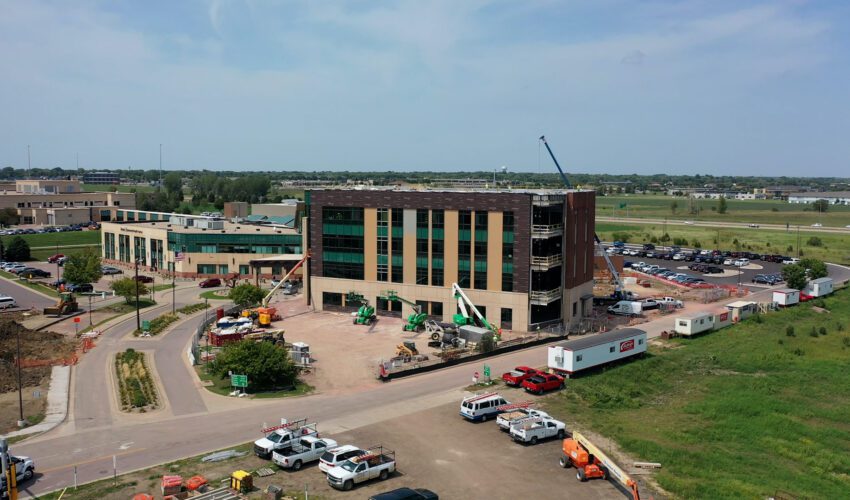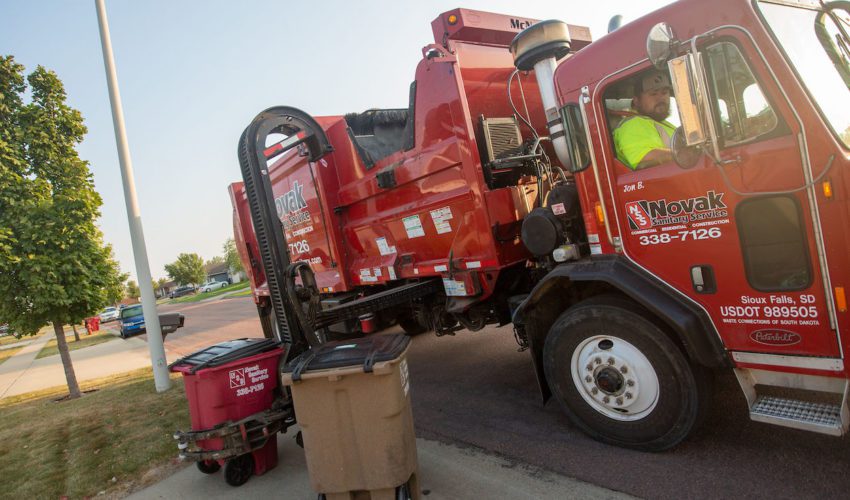Automated garbage service offers benefits for all involved
Oct. 7, 2020
This paid piece is sponsored by Novak Sanitary Service.
It’s like giving a garbage hauler an extra helping hand.
In a neighborhood in Tea, a Novak Sanitary driver guides an automated side loader.
Once customers bring their containers to the curb, Novak and the ASL do the rest.
“Instead of a rear-load truck where the driver has to exit and drag the containers to the truck, this has an arm instead,” explained Mike Keeran, Novak’s operations manager.
“It’s not fully automated, but it’s controlled by the driver with a joystick. That allows the driver to service the container without getting out of the truck. It has so many benefits not only for customers and the community but for our drivers as well.”
‘Greener’ approach
Using a truck with an automated side loader means a driver can make 100 to 125 stops per hour, roughly 60 percent more efficiency than with a rear-load truck.
“So that helps a lot of things, including our carbon footprint,” Keeran said. “The truck is on the street a lot shorter time and at each stop a lot less time, so the weight of the truck isn’t sitting on asphalt or concrete, which creates wear on the road, and there are fewer emissions for the same work done.”
It also keeps trucks from blocking parts of narrow streets as long, he added.
“It’s a learning process that can take drivers a few weeks longer than a rear load, but once they get the rhythm down, drivers tend not to want to go back.”
Cost control, customer service
While using less fuel is friendly on the environment, it also helps keep costs down for the company, which helps consumers.
“We use far less diesel fuel serving each customer using automated than rear load,” Keeran said.
Customers also benefit during inclement weather because “it’s a lot easier to make up a route,” he added. “We can put an extra driver on a route and get a lot more accomplished, especially in weather where they’re not slowed down by getting out of the truck and dragging cans.”
Employee-friendly approach
It’s not always the easiest thing to find someone willing to service garbage, but the ASL approach makes a big difference.
For a generation that grew up around technology, “it becomes a familiar process more quickly,” Keeran said. “We have a lot of team members in that category, and they love it. There’s a lot more responsibility, of course, but they take to it a lot faster.”
Because the ASL makes a driver’s job less physically demanding, many are able to work to retirement without fear of personal injury.
“They’re more likely to stay, and that means customers are more likely to see the same driver, establish those relationships that both enjoy, and with less turnover, it is easier to maintain a culture of safety for our communities and employees.”
What’s next
Novak is running automated routes in area communities, including Harrisburg, Canton and Brandon and hopes to eventually get there in Sioux Falls.
First, though, city ordinance would need to be adjusted to allow customers bring their containers to the curb as is the case in most cities of this size.
“That’s already been done temporarily because of the COVID-19 pandemic as a way to keep customers and drivers more socially distant and in anticipation of potential workforce reductions due to the virus,” Keeran said.
“Hopefully, customers already are seeing the benefits of improved service speed. If we’re able to move forward with implementing this new technology, service will only get better with more ability to control cost.”

